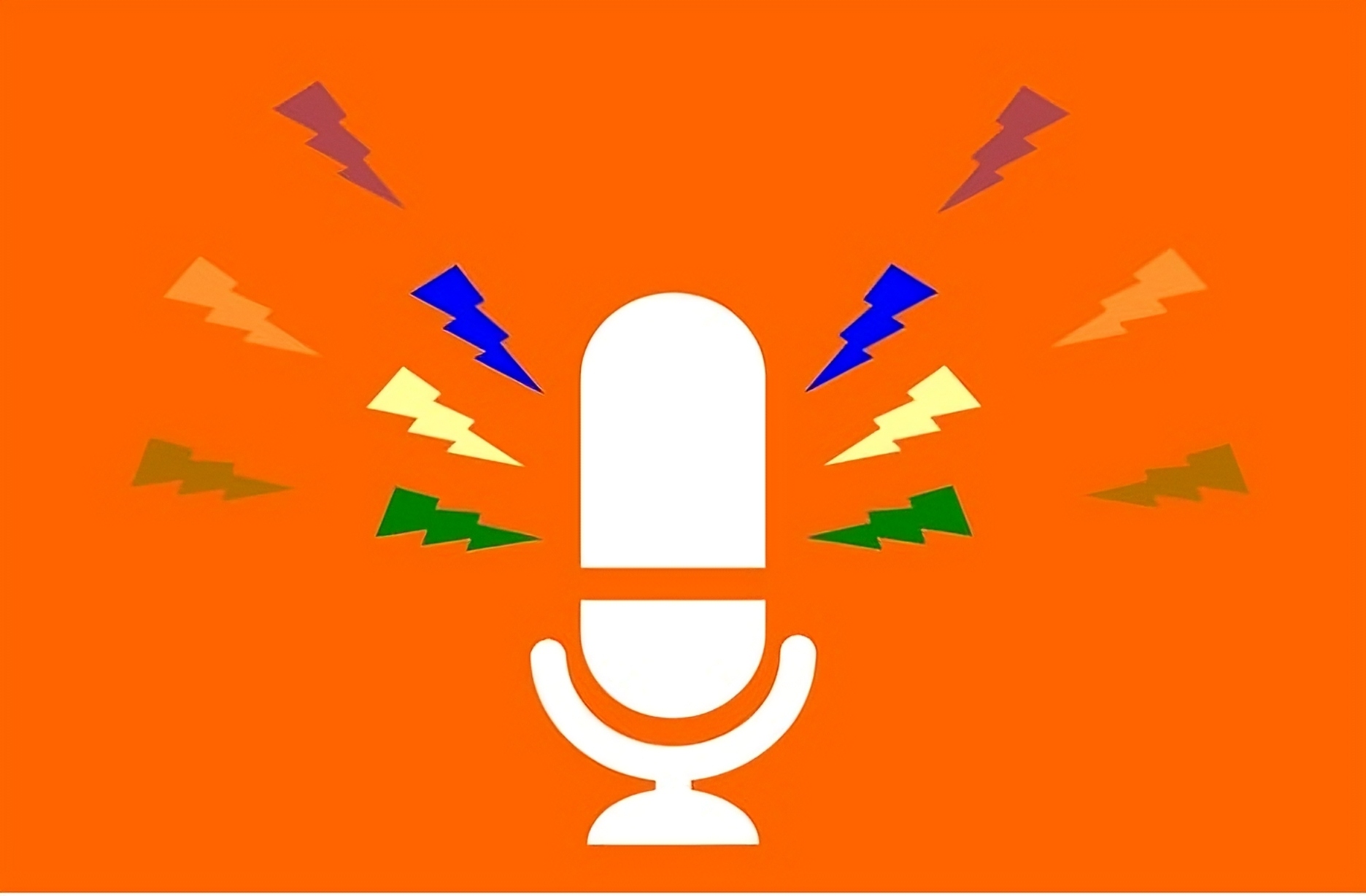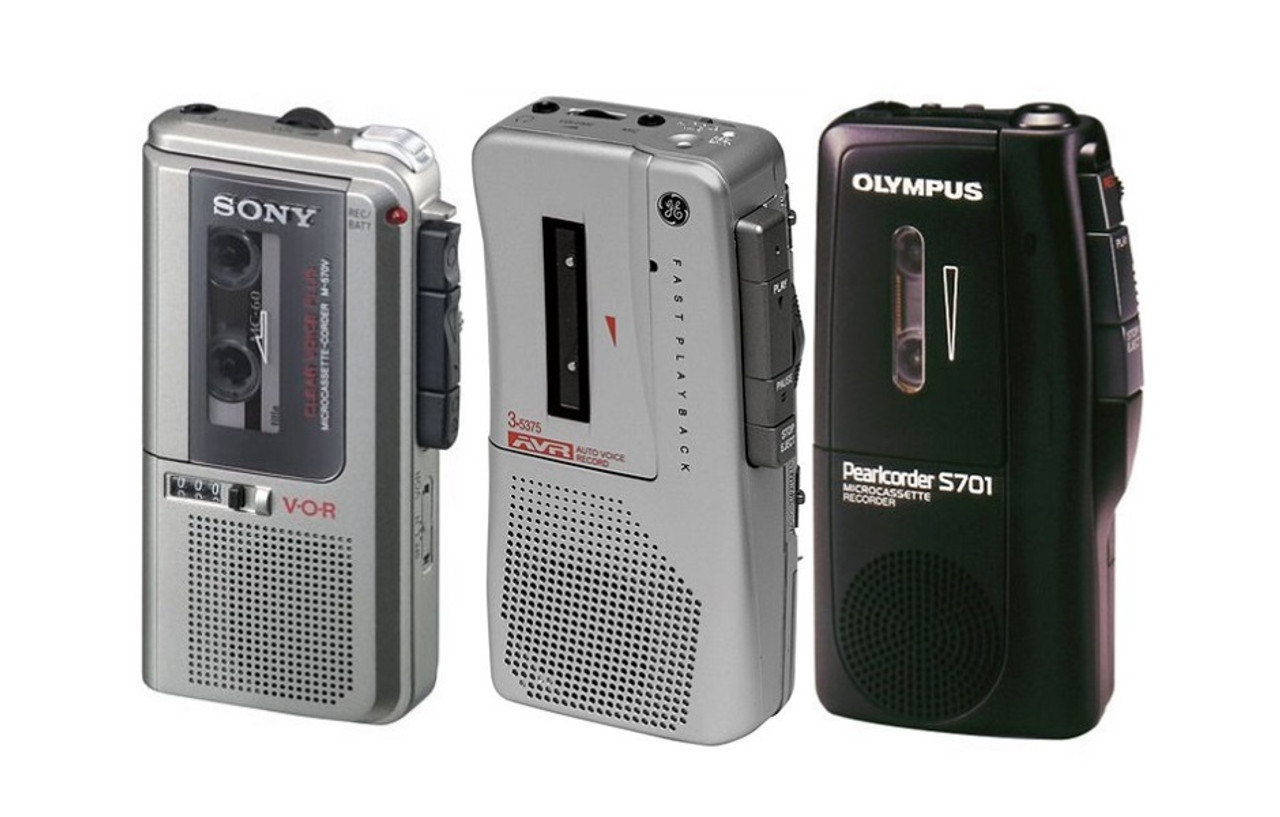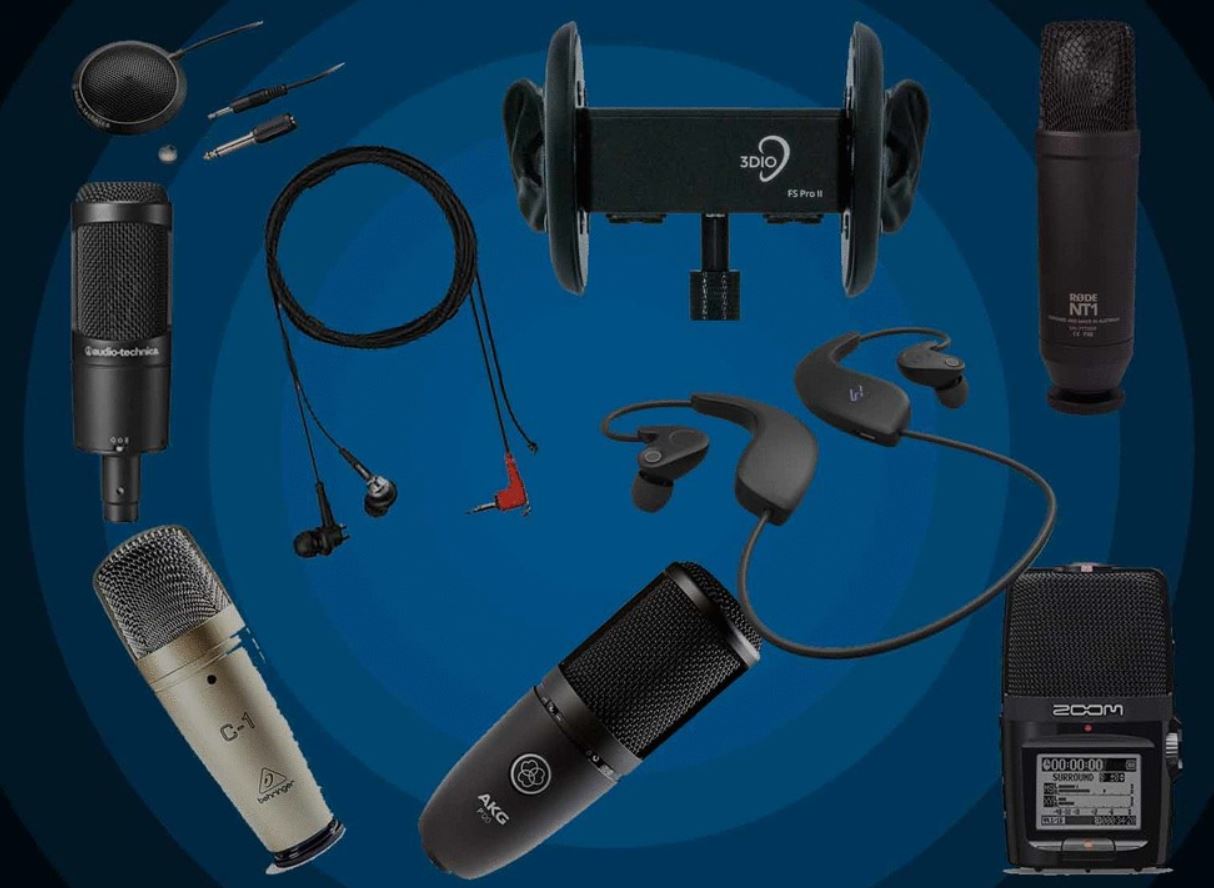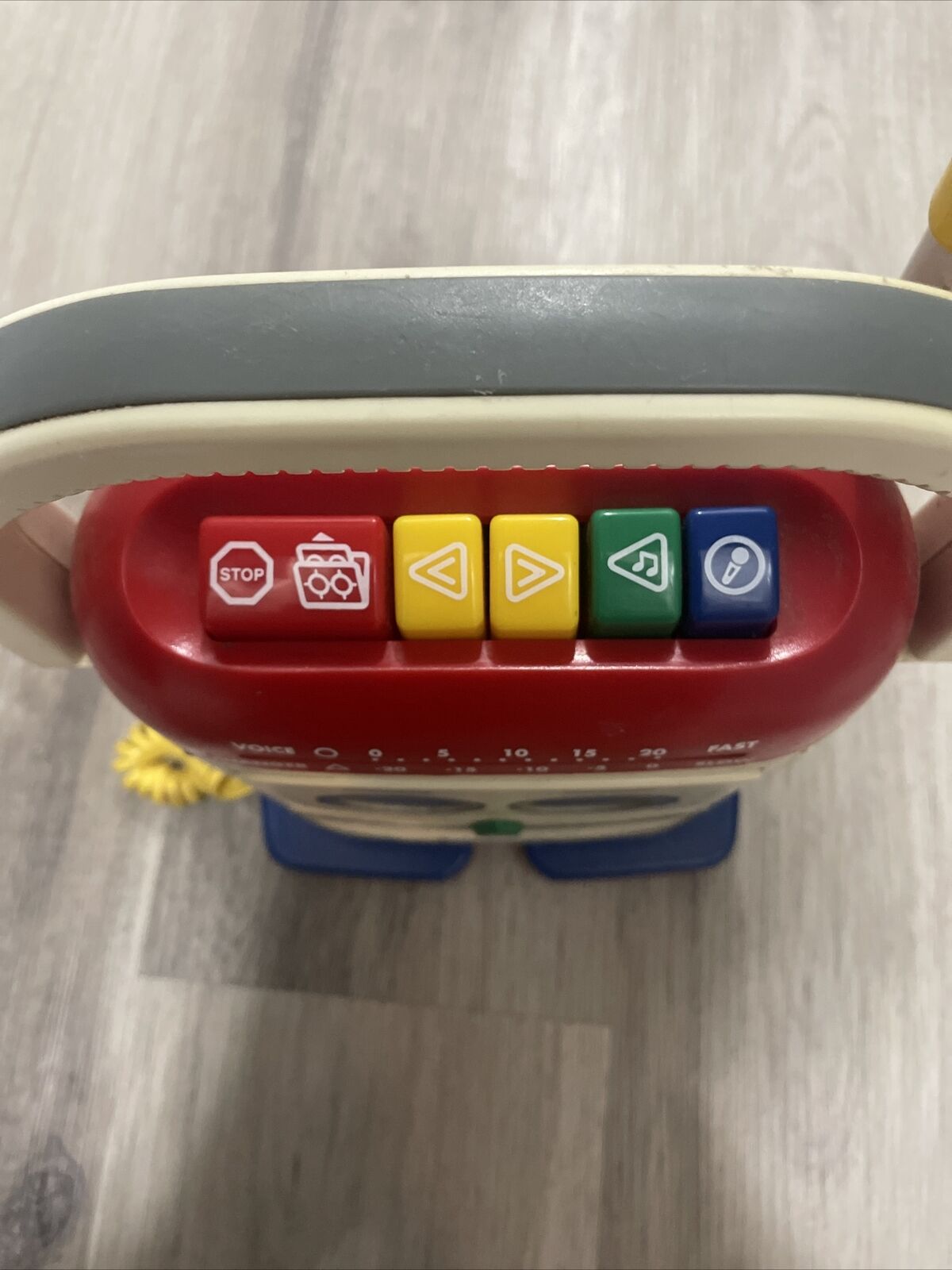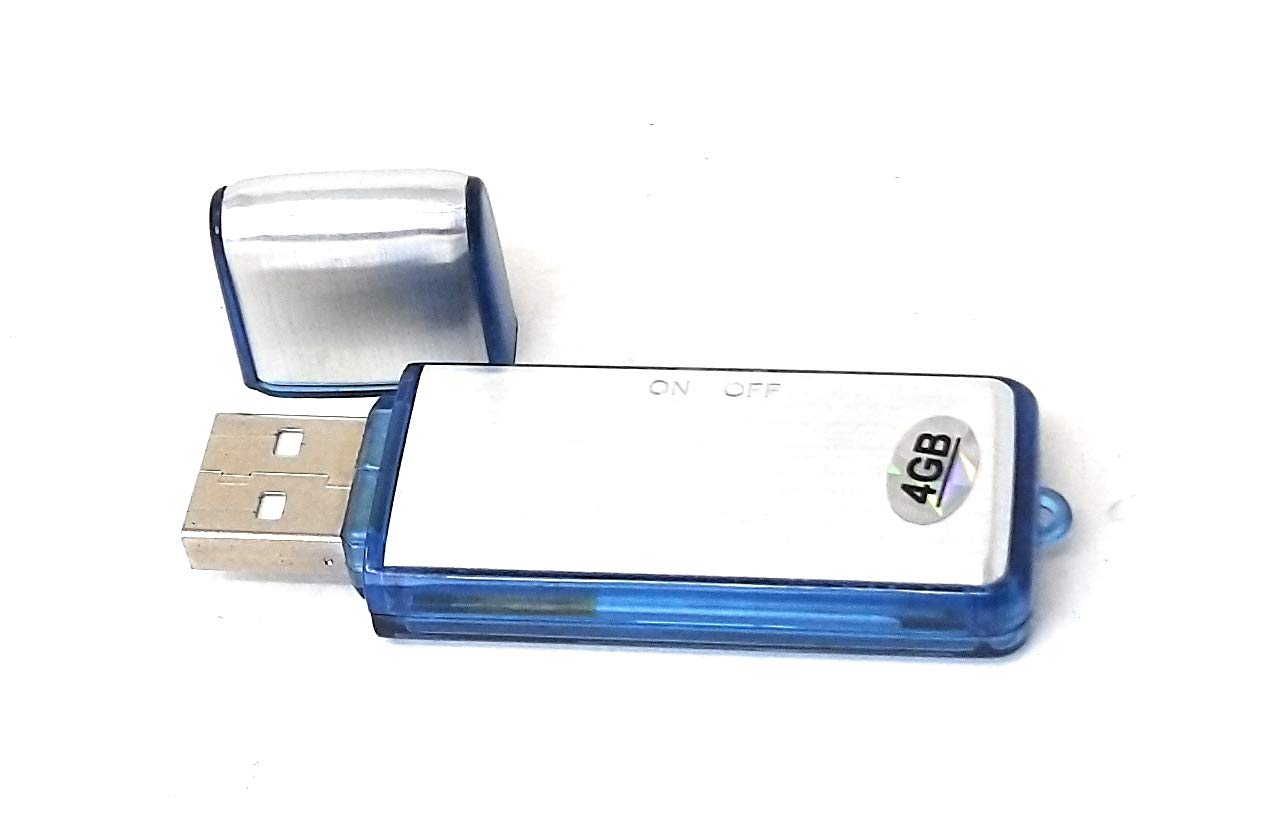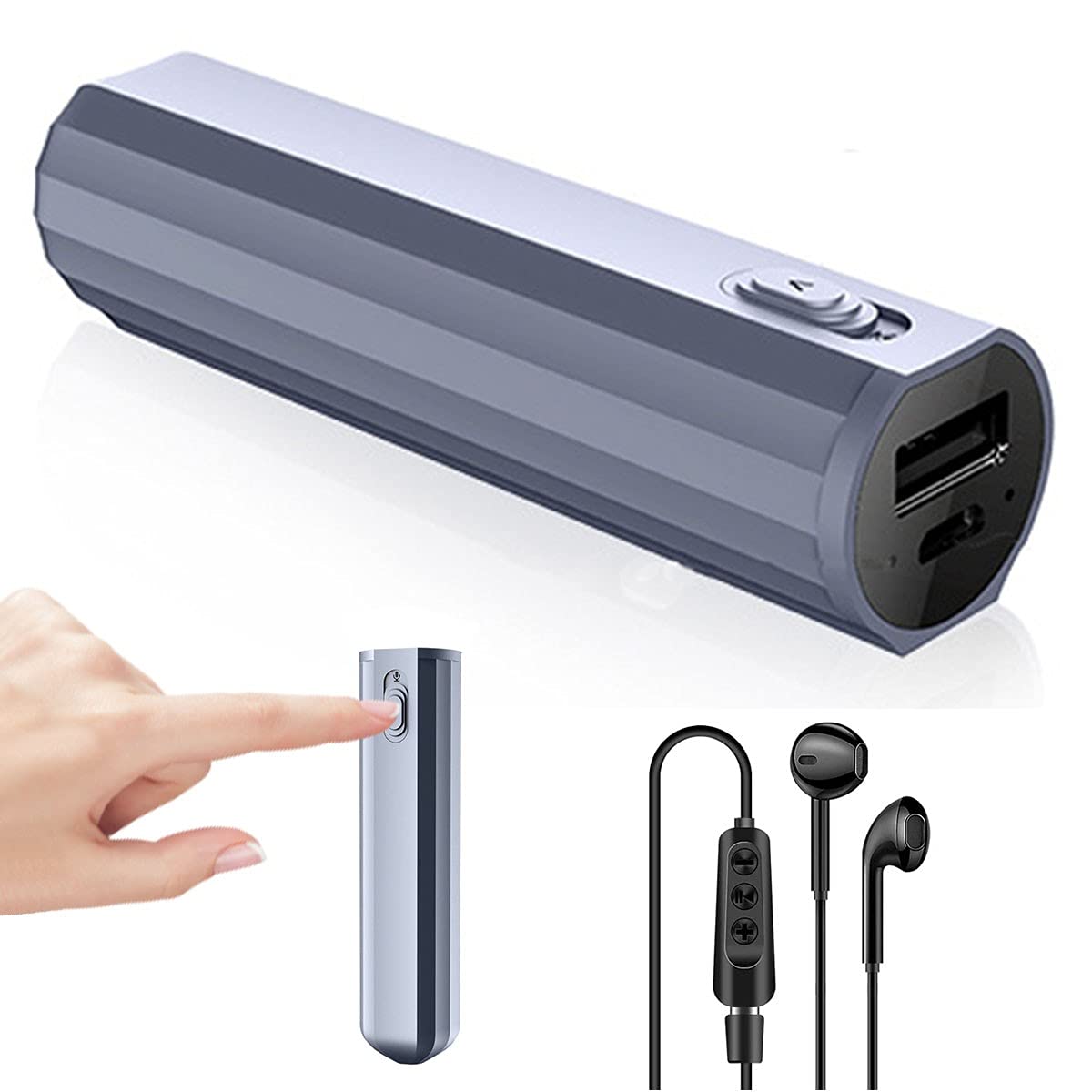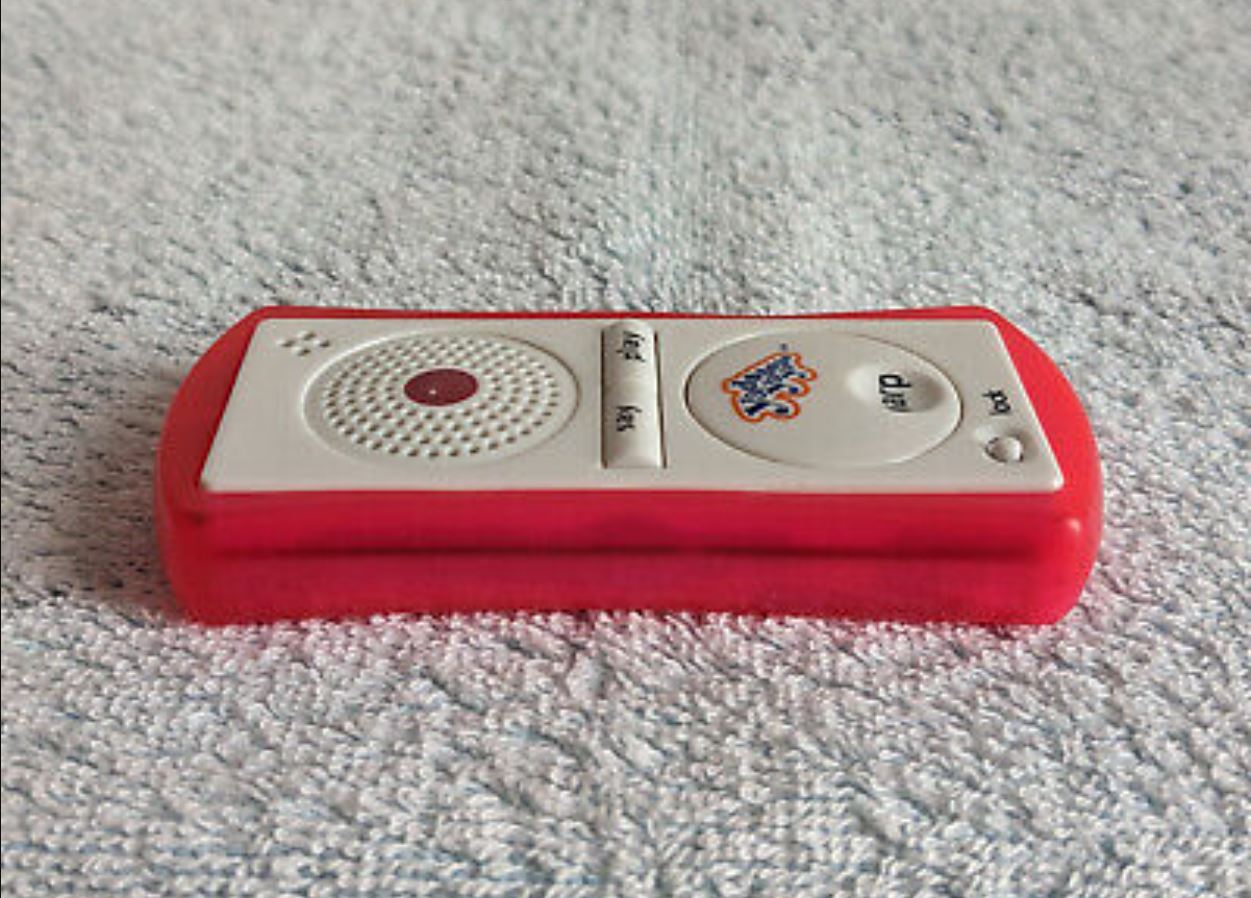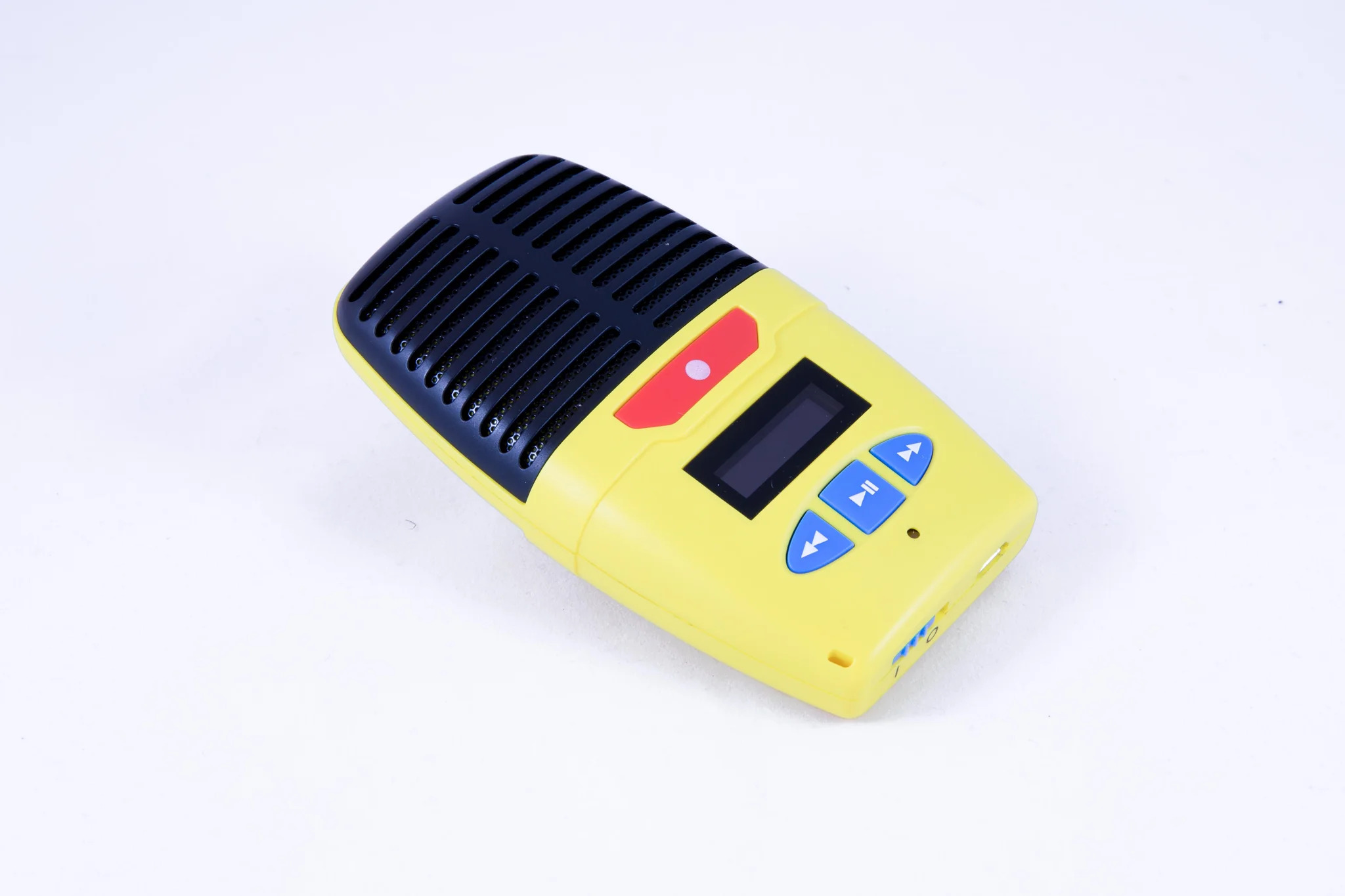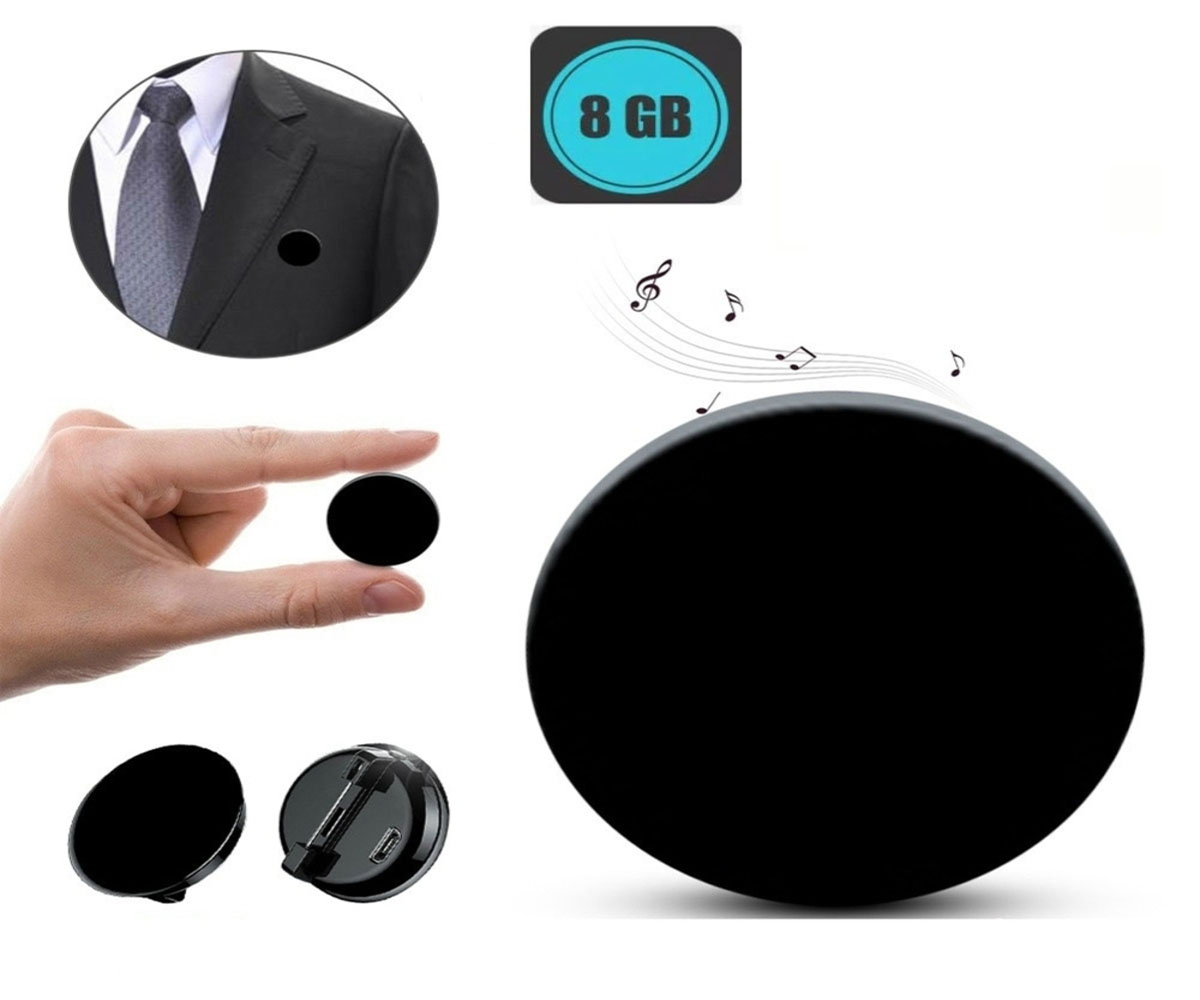Introduction
A voice recorder is a device that captures and stores audio recordings. It has become an essential tool for various purposes in today’s digital age. Whether it’s for professional use in meetings, interviews, or lectures, or for personal use in capturing memories or creating content, voice recorders have revolutionized how we capture and preserve audio.
In this article, we will explore how voice recorders work and the components that enable them to record and store high-quality audio. We will delve into the process of converting sound waves into digital signals, the importance of microphones, the role of analog-to-digital conversion, and the function of audio processors. Additionally, we will discuss the storage methods employed by voice recorders, as well as the features and settings that enhance usability.
Understanding how a voice recorder works will not only help you make informed decisions when purchasing one, but it will also provide you with the knowledge to optimize its performance and utilize its features effectively. So, let’s delve into the fascinating world of voice recorders and uncover the technology behind these compact and versatile devices.
How Does a Voice Recorder Work?
A voice recorder employs a combination of hardware and software to capture, store, and playback audio recordings. The process involves several key components working together seamlessly to deliver high-quality sound reproduction.
At the core of a voice recorder is a microphone, which serves as the sound receiver. The microphone converts sound waves into electrical signals, which are then processed and stored digitally. The captured audio undergoes analog-to-digital conversion, where the continuous analog signal is transformed into binary code, consisting of 0s and 1s.
Once the audio has been converted into a digital format, it passes through an audio processor. The audio processor enhances the quality of the sound and applies various adjustments such as noise reduction, equalization, and compression. These enhancements help to optimize the audio for clearer playback and efficient storage.
The processed audio is then stored in the internal memory of the voice recorder or on an external storage medium like an SD card. The storage capacity varies depending on the model, but it allows for the storage of a significant amount of audio recordings. The voice recorder also organizes the recordings, allowing users to easily navigate and access specific files.
Playback functionality is a key feature of a voice recorder. When a user wants to listen to a recorded audio file, the digital data is converted back into analog sound waves. This is achieved through a process known as digital-to-analog conversion. The audio is then output through a built-in speaker or can be listened to using headphones or external speakers.
To power the voice recorder and ensure its functionality, it is equipped with a battery. The battery provides the necessary power to operate the device, allowing for recording, playback, and other functions.
Overall, the seamless interaction between the microphone, analog-to-digital conversion, audio processor, storage, playback, and battery ensures that the voice recorder works efficiently in capturing and reproducing audio recordings.
Components of a Voice Recorder
A voice recorder consists of various essential components that work together to capture and store audio recordings. Understanding these components is crucial in comprehending how a voice recorder functions and what features it offers.
1. Microphone: The microphone is the primary component of a voice recorder. It captures sound waves and converts them into electrical signals. Different voice recorders may have different types of microphones, such as built-in microphones or external ones that can be connected for enhanced recording quality.
2. Analog-to-Digital Converter: The analog-to-digital converter is responsible for converting the analog electrical signals from the microphone into digital data. It transforms the continuous waveform into binary code, which consists of a series of 0s and 1s.
3. Audio Processor: The audio processor is an integral part of a voice recorder. It enhances the quality of the recorded audio by applying various adjustments, such as noise reduction, equalization, and compression. These adjustments aim to improve the clarity and overall sound reproduction.
4. Storage: Voice recorders have internal memory or external storage options, such as SD cards or USB drives, to store the recorded audio files. The storage capacity varies among voice recorders, with some capable of storing several hours or even days of recordings.
5. Playback Mechanism: The playback mechanism allows users to listen to the recorded audio files. It converts the digital data back into analog sound waves, which can be heard through built-in speakers or through headphones or external speakers connected to the voice recorder.
6. Battery: Voice recorders are powered by batteries, either rechargeable or non-rechargeable. The battery provides the necessary power for the operation of the voice recorder, enabling recording, playback, and other functions.
7. User Interface: Voice recorders are equipped with user-friendly interfaces, including buttons, knobs, and screens, to navigate through menu options, adjust settings, and access recorded audio files. The user interface allows for easy operation and customization of the voice recorder’s functions.
8. Additional Features: Voice recorders may come with additional features such as voice activation mode, which starts recording when sound is detected, or adjustable recording quality settings for different recording scenarios. Some voice recorders also offer the capability to timestamp recordings or include built-in speakers for instant playback without the need for external devices.
Understanding the components of a voice recorder provides insights into its capabilities and functionality. Each component plays a crucial role in delivering high-quality audio recordings and ensuring a seamless user experience.
Microphone: The Sound Receiver
The microphone is a fundamental component of a voice recorder, serving as the sound receiver. It plays a vital role in capturing audio by converting sound waves into electrical signals that can be processed and stored digitally.
Microphones come in different types and designs, each with its unique characteristics and applications. Some voice recorders have built-in microphones, while others allow for external microphones to be connected for enhanced recording quality.
The microphone operates on the principle of converting acoustic energy (sound waves) into electrical energy. It consists of various components that work together to achieve this conversion process. These components include:
- Diaphragm: The diaphragm is a thin and flexible membrane that vibrates in response to sound waves. It acts as the primary sound-sensing element in the microphone.
- Coil and Magnet: Behind the diaphragm, there is a coil of wire attached to it. When the diaphragm vibrates, the coil moves within a magnetic field created by a permanent magnet. This movement generates an electrical current proportional to the sound vibrations.
- Connector: The connector is the interface that allows the microphone to be connected to the voice recorder. It enables the transfer of electrical signals from the microphone to the recording device.
Microphones are designed to capture sound waves from different directions. There are two main directional characteristics:
- Omni-directional: Omni-directional microphones capture sound equally from all directions. They are ideal for recording in environments where the source of sound is not limited to a specific direction, such as recording a meeting or capturing ambient sounds.
- Uni-directional: Uni-directional microphones are designed to capture sound predominantly from one direction. They are useful for recording in situations where you want to focus on a specific sound source, such as recording an interview or a solo performance.
Microphones also differ in sensitivity, frequency response, and noise-handling capabilities. These factors affect the clarity and quality of the recorded audio. A high-quality microphone will accurately capture a wide range of frequencies and minimize unwanted noise, resulting in clear and precise recordings.
Understanding the importance of the microphone as the sound receiver in a voice recorder allows users to select the right microphone for their specific recording needs. Whether it’s for capturing a lecture, conducting interviews, or creating professional-grade audio content, choosing the appropriate microphone will greatly enhance the overall audio recording experience.
Analog-to-Digital Conversion: From Sound Waves to Binary Code
Analog-to-digital conversion is a crucial process in a voice recorder that transforms the continuous analog signals produced by the microphone into digital data, represented by a series of 0s and 1s. This conversion is necessary for the voice recorder to store and process the audio recordings in a digital format.
The process of analog-to-digital conversion involves several steps:
- Sampling: The first step in analog-to-digital conversion is sampling. The analog signal is sampled at regular intervals by measuring its amplitude at each sampling point. The sampling rate, expressed in samples per second (Hz), determines how often the analog signal is sampled. A higher sampling rate captures more details of the waveform.
- Quantization: After sampling, the next step is quantization. In this step, the amplitudes of the sampled analog signals are assigned discrete values. The analog signals are represented in a binary number system, which consists of 0s and 1s. The number of bits used to represent each sample determines the resolution and dynamic range of the digital audio.
- Encoding: Once the analog signals are quantized, they are encoded into binary code. In pulse code modulation (PCM), the most common encoding method, each quantized sample is represented by a binary number. The number of bits used to encode each sample determines the level of precision and the dynamic range of the digital audio.
The accuracy and quality of the digital audio depend on the sampling rate and the number of bits used for quantization and encoding. A higher sampling rate and greater bit depth result in more accurate representation of the original analog signal, capturing more nuances and details.
Throughout the analog-to-digital conversion process, there is the possibility of losing some information due to the finite resolution of digital representation. This loss is known as quantization noise. However, modern voice recorders utilize advanced algorithms and techniques to minimize quantization noise and maximize the fidelity of the converted digital audio.
Once the analog signals have been converted into binary code, they can be processed, stored, and manipulated by the voice recorder. This digital format allows for easy organization, editing, and sharing of the audio recordings.
Understanding the process of analog-to-digital conversion provides insights into how voice recorders capture and store audio recordings. It highlights the importance of choosing a voice recorder with a high-quality analog-to-digital converter to ensure accurate and faithful representation of the original sound waves.
Audio Processor: Enhancing and Compressing Sound
The audio processor is a key component of a voice recorder that plays a vital role in enhancing the quality of audio recordings. It processes the digitized audio, applying various adjustments to improve the clarity, balance, and overall sound reproduction.
The audio processor performs several functions to optimize the audio recordings:
- Noise Reduction: One of the primary functions of the audio processor is to reduce background noise and unwanted sounds. It analyzes the audio signal and identifies frequencies that are not part of the desired sound. By applying filtering techniques, it suppresses or eliminates these unwanted frequencies, resulting in cleaner and clearer audio.
- Equalization: The audio processor adjusts the frequency response of the audio to enhance specific ranges of frequencies. It can boost or attenuate certain frequencies to improve the overall balance and tonal quality of the recording. Equalization allows for customization and optimization of the audio for different types of recordings or environments.
- Compression: Compression is another important function of the audio processor. It reduces the dynamic range of the audio by automatically adjusting the volume levels. It brings softer sounds closer to the louder sounds, resulting in a more consistent volume throughout the recording. Compression helps to prevent distortion and ensures that the audio is clear and easily audible, even in situations with varying sound levels.
- Enhancements:The audio processor may also provide options for additional enhancements, such as reverberation, echo cancellation, or stereo widening. These enhancements can add depth, spaciousness, and stereo separation to the audio recordings, enhancing the overall listening experience.
The audio processor settings can usually be customized to suit individual preferences and specific recording scenarios. Users can typically adjust the noise reduction level, equalization settings, compression ratios, and other parameters to achieve the desired audio quality.
It is important to note that while the audio processor can enhance the audio quality, it is essential to use it judiciously. Overuse or excessive application of the audio processing features can result in unnatural or artificial-sounding audio. A balance must be maintained to ensure that the processed audio sounds natural and retains its original characteristics.
With the advancements in technology, voice recorders now offer advanced audio processing algorithms and features. These advanced processors can greatly enhance the recorded audio, making even low-quality recordings sound better and more professional.
Understanding the role of the audio processor in a voice recorder allows users to take advantage of its capabilities and optimize the audio recordings for their intended purpose. It provides the ability to fine-tune the audio and achieve high-quality recordings for various applications.
Storage: Saving and Organizing Audio Files
Storage is a vital component of a voice recorder, allowing for the saving and organization of audio files. It provides the capacity to store a significant amount of recorded audio, ensuring that the recordings are easily accessible for playback or further processing.
Voice recorders utilize different storage methods, including internal memory and external storage mediums such as SD cards or USB drives. The storage capacity varies depending on the model and can range from a few gigabytes to several terabytes.
When using a voice recorder, each recorded audio file is saved as a digital file format in the storage. These files are typically stored in common audio formats such as WAV, MP3, or FLAC. These file formats allow for compatibility with various devices and software applications, ensuring easy access and playback of the recorded audio.
Organizing the audio files is an essential aspect of storage. Most voice recorders provide built-in organizational features, allowing users to create folders or categories to classify and manage their recordings. These folders can be named and customized, making it easier to locate specific audio files when needed.
Some voice recorders also offer additional features to facilitate efficient storage and organization. These features may include the ability to tag files with metadata such as date, time, location, or keywords. Such tags make it easier to search and filter recordings based on specific criteria.
As storage capacity is finite, managing the space becomes important, especially if the voice recorder has limited storage capabilities. Deleting unwanted or unnecessary recordings frees up space for new recordings. However, it is advisable to make backups of important audio files to prevent data loss.
In recent years, voice recorders have seen advancements in storage technologies, such as cloud storage integration. This allows for seamless synchronization and backup of recorded audio files to online cloud storage services like Dropbox or Google Drive.
Efficient storage and organization of audio files in a voice recorder enable easy access, retrieval, and management of recorded audio. Whether it’s for personal use or professional applications, having well-organized audio files ensures that the valuable recordings are readily available whenever needed.
Playback: Converting Binary Code to Sound Waves
Playback is a crucial function of a voice recorder that allows users to listen to the recorded audio files. It involves the conversion of binary code, which represents the digitized audio, back into analog sound waves that can be heard by human ears.
When a user selects a recorded audio file for playback, the voice recorder retrieves the corresponding binary code from its storage. The process of converting this binary code into sound waves involves several steps:
- Digital-to-Analog Conversion: The first step in playback is digital-to-analog conversion. The binary code is converted back into a continuous analog signal. This process reverses the encoding and quantization performed during analog-to-digital conversion, reconstructing the original waveform.
- Amplification: After the digital-to-analog conversion, the analog signal is usually too weak to be audible. Therefore, an amplification stage is employed to increase the signal strength and bring it to an appropriate level for playback.
- Audio Output: Once the signal has been amplified, it is sent to the audio output of the voice recorder. The audio output may be a built-in speaker, headphone jack, or a connection to external speakers or audio devices. The analog signal is then transformed into sound waves that can be heard by the listener.
During playback, the voice recorder may offer additional features for customized listening experiences. These features may include adjustable volume control, playback speed control, and the ability to repeat or skip sections of the audio recording. Some voice recorders also offer equalization settings to further enhance the audio playback quality.
In addition to the built-in speaker, many voice recorders also provide the option to connect headphones or external speakers. This allows for private listening or sharing the audio with others in various settings such as meetings, presentations, or interviews.
The quality of the playback depends on various factors, including the audio processor’s accuracy during analog-to-digital conversion, the quality of the digital-to-analog converter, and the output capability of the voice recorder’s audio components. High-quality voice recorders ensure faithful and clear playback, which is essential for accurate transcription, analysis, or listening enjoyment.
By converting binary code back into sound waves, voice recorders enable users to listen to their recorded audio files. The playback function is crucial for reviewing and assessing the content of the recordings, as well as for evaluating the quality of the recorded audio.
Battery: Powering the Voice Recorder
A voice recorder relies on a battery as its power source to operate efficiently. The battery provides the necessary electrical energy to power the various components of the voice recorder, allowing for recording, playback, and other functions.
Most voice recorders use either rechargeable or non-rechargeable batteries. Rechargeable batteries, such as lithium-ion or nickel-metal hydride (NiMH) batteries, can be charged multiple times, offering a cost-effective and eco-friendly option. Non-rechargeable batteries, such as alkaline or lithium batteries, are disposable and need to be replaced once their energy is depleted.
The battery life of a voice recorder depends on various factors, including the capacity of the battery, the power requirements of the device, and the usage patterns. Different models of voice recorders have varying battery life, ranging from a few hours to several days or even weeks.
The power consumption of a voice recorder depends on the functions being used. Recording and playback typically use more power compared to functions like file navigation or settings adjustment. Enabling features such as noise reduction or file compression can also impact battery life.
Some voice recorders include power-saving features to maximize the battery life. These features may include automatic power-off after a period of inactivity, adjustable screen brightness, and the ability to disable or adjust power-intensive settings.
When the battery level is low, voice recorders often provide visual or audible alerts to notify the user. It is essential to keep spare batteries or have access to a power source (if rechargeable) to avoid interruptions during recording or playback sessions.
To extend the battery life, it is advisable to follow best practices, such as fully charging rechargeable batteries before use, avoiding exposure to extreme temperatures, and turning off the voice recorder when not in use.
It is worth noting that the battery life mentioned by the manufacturer is based on optimal conditions, and actual usage may vary. Factors such as temperature, battery age, and power-hungry features can affect the actual battery performance.
The battery plays a critical role in ensuring the smooth operation of a voice recorder. By providing the necessary power, it allows users to capture and playback audio recordings with portable convenience.
Features and Settings of Voice Recorders
Voice recorders come with a variety of features and settings that enhance usability, flexibility, and customization. These features make voice recorders versatile tools that cater to different recording needs and preferences.
Here are some common features and settings found in voice recorders:
- Recording Modes: Voice recorders often offer different recording modes to adapt to various situations. These may include standard mode, stereo mode, interview mode, lecture mode, and more. Each mode is optimized to capture specific types of audio with the appropriate settings for best results.
- File Formats: Voice recorders typically support multiple file formats for recording and storing audio. Common formats include WAV, MP3, and FLAC. Different formats offer varying levels of audio quality, file size, and compatibility with playback devices or audio editing software.
- Storage Capacity: Voice recorders come with varying internal storage capacities or support for external storage media such as SD cards. The storage capacity determines the number of audio files that can be stored on the device. Voice recorders with larger storage capacity allow for more extended recording sessions without the need to delete or transfer files frequently.
- Wireless Connectivity: Some advanced voice recorders feature built-in Bluetooth or Wi-Fi capabilities. These allow for wireless file transfers, remote control via smartphones or tablets, or syncing with cloud storage platforms. Wireless connectivity makes it convenient to transfer, share, and access recordings without the need for physical connections.
- Voice Activation: Voice activation mode is a useful feature that starts recording automatically when sound is detected and pauses when silence occurs. This can help save storage space and facilitate hands-free recording, especially in situations where there are pauses between conversations or presentations.
- Adjustable Settings: Voice recorders offer various settings that allow users to adjust recording parameters according to their preferences. These settings may include microphone sensitivity, recording quality (bitrate or sample rate), equalization, noise reduction, and more. Customizable settings provide flexibility to adapt to specific recording environments and optimize audio quality.
- Timestamping: Some voice recorders offer the functionality to add timestamps to recorded audio files. Timestamps provide a reference point for specific sections of a recording, making it easier to locate and navigate through important moments during playback or transcription.
- Playback Features: Playback features may include adjustable playback speed, repeat playback, skip forward or backward, and bookmarking. These features enhance the listening experience and aid in reviewing and analyzing recordings more efficiently.
It’s important to note that the availability and specific features vary among different models and brands of voice recorders. When choosing a voice recorder, consider the features and settings that align with your recording requirements and preferences.
The wide range of features and settings in voice recorders allows users to customize their recording experience and adapt to different scenarios. These capabilities make voice recorders versatile tools for capturing high-quality audio in various professional, educational, and personal contexts.
Conclusion
Voice recorders have become indispensable devices for capturing and storing audio recordings in a variety of settings. With their advanced technology and array of features, they offer flexibility, convenience, and high-quality audio reproduction.
In this article, we explored the inner workings of a voice recorder, understanding how it converts sound waves into digital code through analog-to-digital conversion. We learned about the essential components such as the microphone, audio processor, storage, battery, and playback mechanism that contribute to the functionality and performance of voice recorders.
We also discussed the importance of selecting the right microphone, as it acts as the sound receiver and significantly influences the quality of the recorded audio. Additionally, we examined the process of analog-to-digital conversion, where the continuous analog signals are transformed into binary code for storage and processing.
The audio processor plays a crucial role in enhancing the audio quality by reducing noise, applying equalization, and employing compression techniques. We also explored the significance of storage in saving and organizing audio files, allowing for easy access and management.
Additionally, we discussed the vital role of the battery in powering the voice recorder, providing the necessary energy for its operation. Lastly, we examined the various features and settings found in voice recorders, enabling users to customize their recording experience and optimize audio quality.
By understanding how voice recorders work and the various components and features they offer, users can make informed decisions when selecting a voice recorder that best suits their needs. Whether it’s for professional use in meetings, interviews, or lectures, or for personal use in capturing memories or creating content, voice recorders have revolutionized the way we capture and preserve audio.
As technology continues to advance, we can expect voice recorders to become even more powerful and versatile, further enhancing the audio recording experience. So, whether you’re a student, a journalist, a musician, or simply someone who wants to capture important moments, a voice recorder is an invaluable tool that ensures the preservation and enjoyment of sound for years to come.







